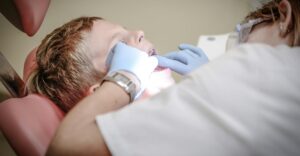Life throws little emergencies our way now and then, and being prepared is crucial.
Ever bumped your knee and wished you knew how to treat it properly? Maybe you’ve wondered what to do if someone chokes or gets a bad burn.
Consider this article your guide to first-aid basics. We’ll discuss action plans for emergency situations, as well as common first-aid scenarios and treatments.
Let’s jump in and learn how to be ready for anything!
The Action Plan
In an emergency, staying calm and taking decisive action can make a world of difference. You should have an idea of the basic action plan because it provides a clear and concise understanding of responding to a variety of emergencies. Here are some common steps to take:
Assess the Scene for Safety
Before you attempt to help the victim, the first and foremost priority is ensuring your own and others’ safety. This means taking a quick moment to assess the scene for potential hazards, such as traffic, fire, electrical, and environmental hazards.
If the scene is unsafe, your first action should be to remove yourself and the victim from immediate danger. Call emergency services from a safe location and wait for help to arrive.
Check the Victim’s Consciousness
Once you feel the scene is safe, it’s time to check on the victim. Gently tap the person on the shoulder and speak to them in a loud, clear voice.
If the victim is conscious and aware of their surroundings, ask them about their injuries and continue assessing the situation. If the victim is not responding to your voice or touch, it indicates unconsciousness or a serious injury.
Call Emergency Services
If the victim is unresponsive or has a life-threatening injury, call emergency services immediately. Don’t hesitate, act quickly! Know your local emergency number, stay calm, and speak clearly.
Open the Airway If Blocked
A blocked airway prevents oxygen from reaching the lungs, which can be life-threatening. You should immediately look for signs of airway obstruction, such as:
- Difficulty breathing or gasping for air
- Nostril flaring or noisy breathing
- Inability to speak or speak in short, hoarse sentences
- Blueish color around the lips
To dislodge the object blocking the airway, perform a series of abdominal thrusts. For infants, perform back blows followed by chest thrusts.
Assess Breathing and Provide Support if Needed
Once you’ve opened the airway, check if the victim is breathing normally. Look, listen, and feel for breaths:
- Observe the victim’s chest for rise and fall.
- Place your cheek near the victim’s mouth and nose to feel breaths.
If the victim is not breathing normally, you have to perform rescue breaths. It’s important to note that rescue breaths should only be attempted if you are trained and comfortable doing so.
You should also learn about the recovery position in First-Aid, which helps to protect the airway of an unconscious patient.
Control Bleeding and Check for Pulse
After ensuring the airway is open and breathing is established, address any significant bleeding. You must apply direct pressure to the bleeding wound with a clean cloth or bandage.
Common First-Aid Scenarios and Treatments
You should know how to respond to everyday injuries and emergencies. Below listed are some common first-aid scenarios and the steps you can take to treat them:
Wounds
There can be varied types of wounds, such as cuts, scrapes, puncture wounds, etc.
Treatment:
Stop the Bleeding: First, you should apply direct pressure to the wound with a clean cloth or gauze pad. Hold firm pressure for at least 10 minutes or until the bleeding stops. Elevating the injured limb above the heart can also help reduce bleeding.
Clean the Wound: Once the bleeding has stopped, gently clean the wound with clean running water or sterile saline solution. Remove any dirt or debris.
Prevent Infection: Apply an antibiotic ointment to the cleaned wound.
Bandage the Wound: Cover the wound with a sterile dressing or bandage to protect it from contamination.
Seek medical attention if the bleeding is severe and cannot be managed with direct pressure.
Burns
Types of Burns can be thermal, chemical, or electrical burns.
Treatment:
Stop the Burning Process: For thermal burns, immediately remove the victim from the heat source. For chemical burns, flush the affected area with cool running water to remove the chemical. For electrical burns, turn off the power source if possible, and do not touch the victim if they are still in contact with electricity.
Cool the Burn: For minor thermal burns, cool the affected area with cold running water for 10-15 minutes. Do not use ice, as this can worsen the burn.
Cover the Burn: Loosely cover the burn with a sterile gauze pad or clean cloth. Do not apply ointments, creams, or butter to the burn.
Seek medical attention for all chemical burns or if the burn is on the face, hands, feet, or genitals.
Choking
Choking is a life-threatening emergency that occurs when an object becomes lodged in the airway, blocking breathing.
Treatment:
Adults and Children: Stand behind the victim and wrap your arms around their waist. Make a fist with one hand and place it just above the navel. Place your other hand over your fist and forcefully thrust upwards into the victim’s abdomen.
Sprains, Strains, and Broken Bones
These injuries all involve damage to muscles, ligaments, or tendons.
Signs and Symptoms:
Sprains and strains typically cause pain at the site of injury. Broken bones often cause severe pain that worsens with movement. Other symptoms can be swelling or bruising.
FAQs
What is the first thing I should do in an emergency?
First, check the scene for hazards and prioritize your own safety. If a situation is life-threatening, call emergency services immediately.
How do I know if someone is choking?
Look for signs like difficulty breathing, gasping for air, inability to speak, and bluish color around the lips.
What should I include in a basic first-aid kit?
Bandages, antiseptic wipes, pain relievers, a thermometer, tweezers, and a first-aid manual.
Conclusion
We hope this article helped you understand everything about first-aid basics. Now, if you encounter an emergency, follow these steps to treat the victim and call for help immediately.
First-aid helps to reduce the risk and stops the condition from worsening.








